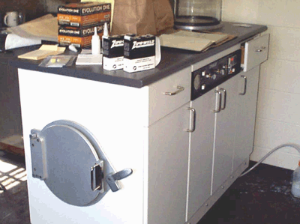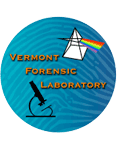Fingerprints
On the surface of the fingertips, palms, soles of the feet, and the toes is specialized skin called friction ridge skin. Unlike the smooth skin on the rest of our bodies, this skin has ridges and furrows that allow friction between that skin and a surface (i.e. allowing for griping objects, walking on surfaces without slipping, etc.). Components produced by the skin and materials we touch coat the friction ridge skin which may leave an impression of that skin’s detail on objects we touch (much like ink from a stamp on paper).
Evidentiary Prints
Evidentiary print is a generic term for an impression of friction ridge detail left on surfaces associated with a crime. These prints can be placed in three categories:
Latent print – a print that is not visible to the naked eye (i.e. a print composed of sweat) – various processing techniques can be used to visualize these prints
Patent print – a print that is composed of material that is visible to the naked eye (i.e. the material may be blood, grease, paint etc.)
Impressed print – a three-dimensional print impressed into a surface (i.e. a print in clay, candle wax, etc.)
Fingerprints are unique to each individual due to the way friction ridge skin forms during fetal development. The unique arrangement of ridge detail on this skin is permanent from its formation in utero until death and decomposition sets in (barring scarring or amputation). The permanent and unique features of friction ridge skin allow an individual to be identified. Even identical twins can be separately identified with friction ridge analysis, a discrimination power that forensic DNA techniques cannot currently determine.
Processing
The oldest method for the recovery of latent prints involves the use of fingerprint powder on non-porous surfaces. A fine powder is used to coat the surface of the print and the impression can be photographed or lifted with tape and preserved as evidence.
Another common technique used on non-porous surfaces is cyanoacrylate (super-glue) fuming. The fumes adhere to the surface of the print. The prints may be further processed with powder or chemical staining techniques to further enhance the impression visually.
Fingerprints deposited on porous substrates such as cardboard or paper can be visualized using several chemical techniques. Special light sources and colored filters allow for the capture and preservation of these prints as evidence.
Comparison
An analysis is performed comparing the evidentiary print to that of a known subject. If there is no subject to compare the evidentiary print to, this print can be entered into the Automated Biometric Identification System (ABIS). The evidentiary print is searched against the friction ridge detail in ABIS that have been added to the database. This tri-state ABIS system includes the ability to search New Hampshire and Maine, in addition to Vermont.
All comparisons are reviewed by an additional examiner to assure correctness and the quality of the work produced, thus providing another level of scrutiny to the conclusions made during the examination of latent print evidence.


